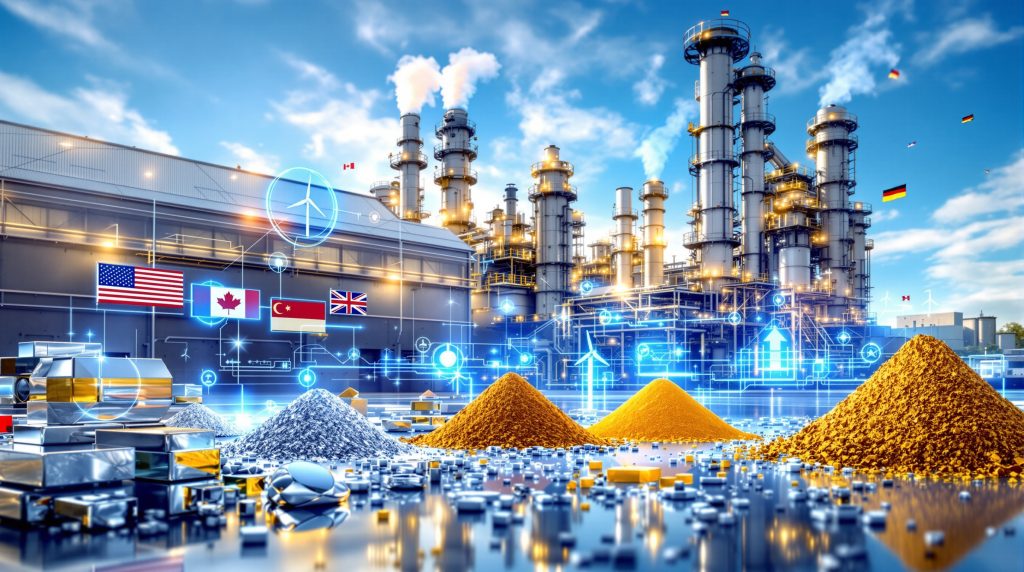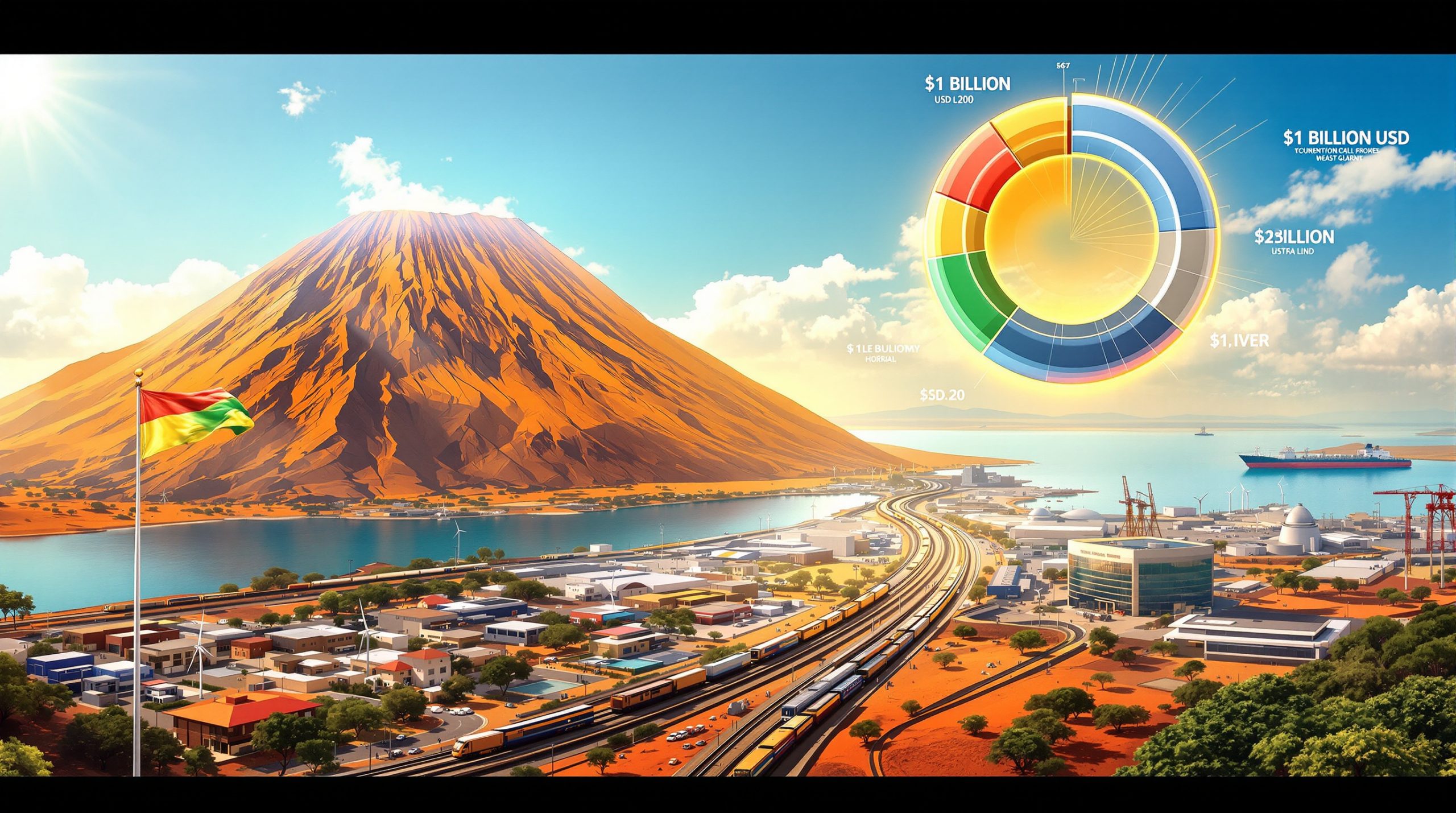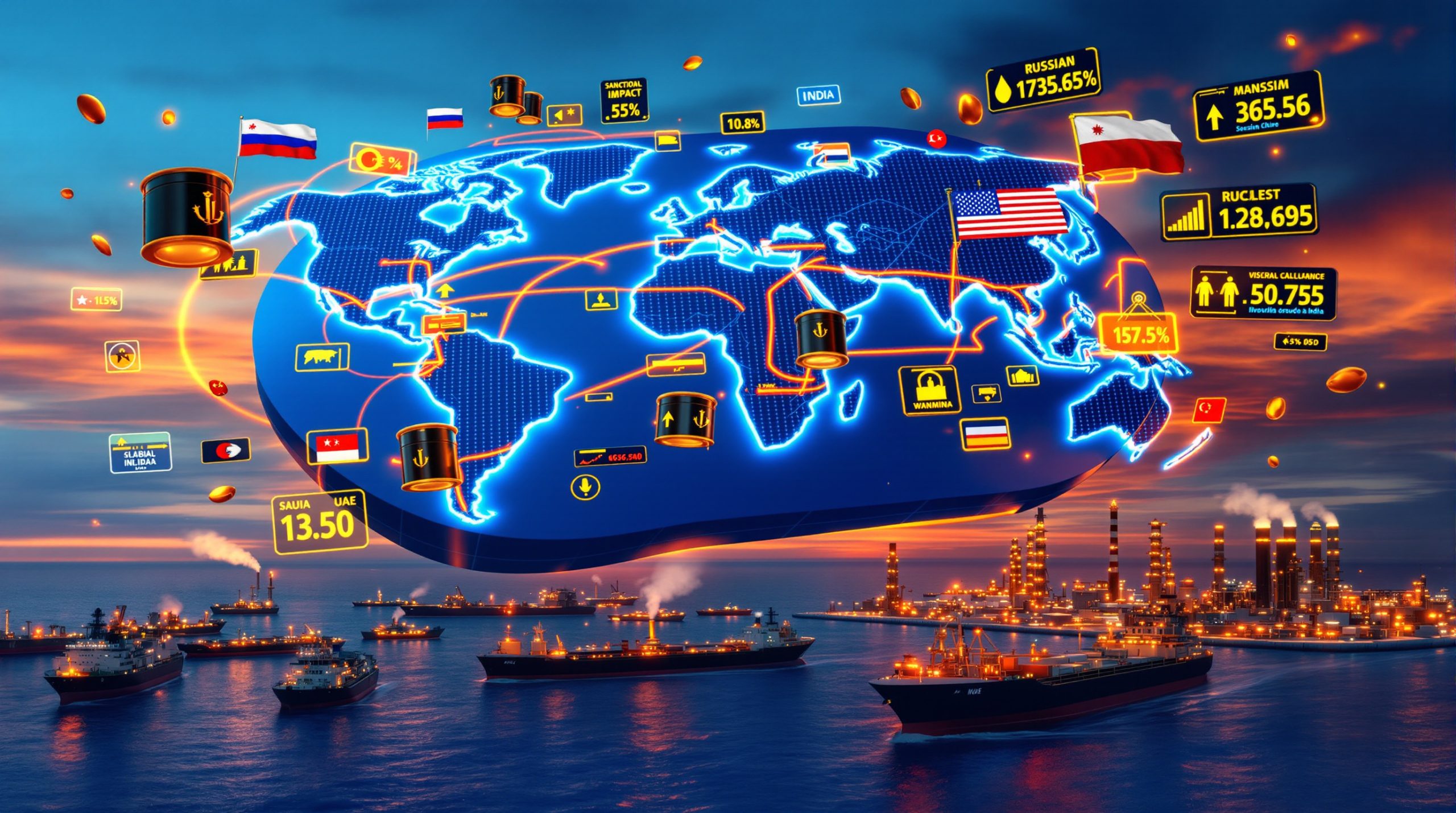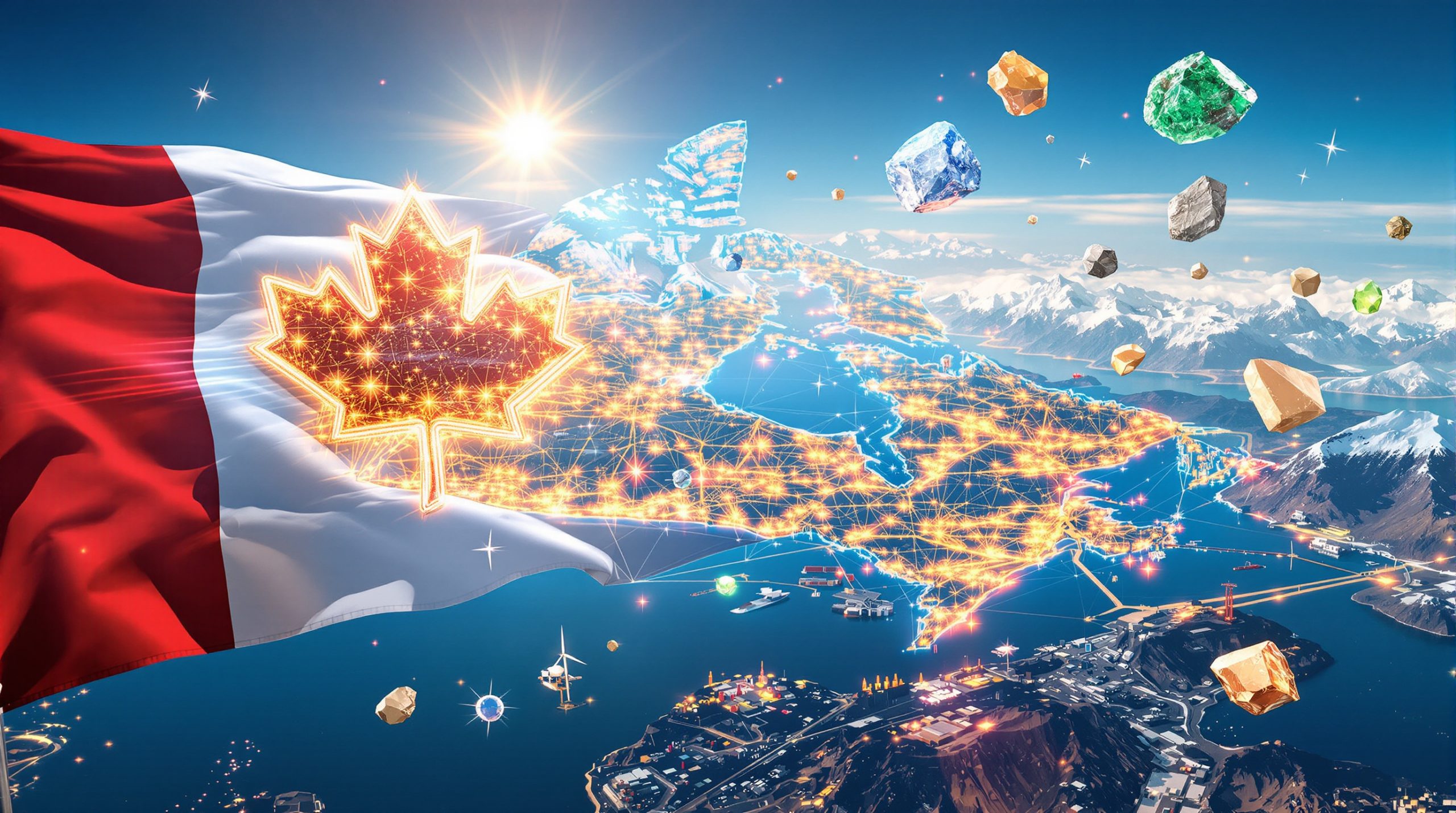The rare earth metals industry faces an unprecedented strategic vulnerability that threatens Western technological advancement and national security. China currently maintains approximately 90% of global rare earth processing capacity, creating a dangerous dependency for critical industries including defense manufacturing, renewable energy systems, and electric vehicle production. However, Solvay rare earth supply agreements are emerging as a pivotal development in addressing these supply chain vulnerabilities.
This processing monopoly represents far more than simple market dominance. While China produces roughly 40% of global rare earth ore, primarily from Inner Mongolia operations, its control over separation and refinement technologies gives it decisive leverage over the entire supply chain. The complexity of rare earth processing requires sophisticated chemical engineering to isolate 17 distinct elements from mixed ore concentrates, including the 15 lanthanides plus scandium and yttrium.
The strategic implications became starkly apparent during China's 2010 rare earth export embargo, which disrupted Japanese and Western manufacturers and served as a catalyst for current diversification efforts. Today, defense applications account for approximately 3-5% of total rare earth consumption but represent the highest strategic importance, as these materials are essential for military equipment where performance degradation cannot be tolerated.
Western nations have responded with comprehensive initiatives to reduce this dependency. The U.S. Department of Defense now classifies rare earth elements as critical minerals energy security concerns essential for national security, while the Defense Production Act Title I provides significant funding for domestic processing capabilities. European Commission rare earth independence initiatives mirror these efforts, creating a coordinated Western response to supply chain vulnerabilities.
How Solvay's La Rochelle Plant Transforms Global Rare Earth Processing
Solvay's La Rochelle facility in France represents a pivotal development in European rare earth independence. The plant achieved a significant milestone in April 2024 when it launched modest commercial processing of critical magnetic materials, marking one of the few non-Chinese facilities capable of complex rare earth separation.
The facility's strategic importance extends beyond simple processing capacity. As CEO Philippe Kehren noted, the company stands among only a handful of organisations outside China with the technical expertise for sophisticated rare earth separation. This positions La Rochelle as a crucial alternative to Chinese processing infrastructure for Western supply chains, particularly supporting the broader European CRM facility development initiatives.
Technical Capabilities and Production Specifications
The La Rochelle plant's current capabilities focus on neodymium-praseodymium (NdPr) and samarium oxide production, with dysprosium-terbium (DyTb) processing scheduled to begin during 2026. These elements represent the core materials for high-performance permanent magnets used in electric vehicle traction motors, wind turbine generators, and advanced electronics.
Solvay's separation technology relies on proprietary solvent extraction processes that achieve the purity levels required for demanding applications. The facility can rapidly scale production levels based on customer demand and government support, though initial volumes remain deliberately limited as commercial partnerships develop.
Investment in European Rare Earth Independence
The €15 million facility upgrade and modernisation program reflects Solvay's commitment to establishing credible European processing capability. This investment supports not only equipment modernisation but also workforce development for specialised rare earth processing skills that have been concentrated in Chinese facilities for decades.
The timeline for commercial-scale production ramp-up depends significantly on customer commitments and government policy support. European customers understand the long-term strategic value of independent rare earth supply chains, but implementation speed will depend heavily on European Commission decisions regarding financial support and regulatory frameworks.
Which Companies Have Secured Rare Earth Supply Deals with Solvay?
Three strategic partnerships demonstrate Solvay's expanding role in Western rare earth supply chains, each targeting different market segments and geographic regions. These Solvay rare earth supply agreements represent proof-of-concept for commercial viability outside Chinese-dominated processing networks.
Noveon Magnetics Partnership: Permanent Magnet Supply Chain
The Noveon Magnetics agreement covers supply of NdPr (neodymium-praseodymium) and DyTb (dysprosium-terbium) oxides, the four critical rare earth elements essential for permanent magnet production. Commercial deliveries will begin in 2026, with NdPr supplies starting significantly earlier as La Rochelle's processing capabilities allow.
Noveon's Strategic Position:
• Texas-based manufacturing facility
• Commercial sintered neodymium-iron-boron (NdFeB) magnet production since 2023
• Focus on electric vehicle and wind turbine applications
• Direct customer relationships with automotive OEMs
This partnership addresses critical supply security concerns for North American permanent magnet manufacturers. Electric vehicles typically require 1-2 kg of rare earth permanent magnets per vehicle, while offshore wind turbines need 200-600 kg of permanent magnet material per turbine. Noveon's Texas location provides strategic proximity to growing EV manufacturing centres and renewable energy project development.
The agreement demonstrates strong demand from U.S. customers who are prepared to sign commercial contracts immediately, contrasting with slower adoption among European manufacturers. This geographic difference reflects stronger financial support for rare earth initiatives in the United States compared to Europe.
Permag and Less Common Metals: Samarium Supply Network
The tri-national partnership involving Solvay (Belgium), Permag (United States), and Less Common Metals (United Kingdom) focuses on samarium oxide supply and conversion to high-purity samarium metal. This collaboration addresses specialised applications requiring extreme temperature stability and magnetic performance reliability.
Partnership Structure and Applications:
• Samarium oxide supplied by Solvay's La Rochelle facility
• Metallurgical conversion to samarium metal by Less Common Metals
• End applications in defence systems and nuclear reactor components
• Temperature performance maintaining magnetic properties above 300°C
Samarium-cobalt magnets represent the original rare earth permanent magnet technology developed in the 1970s. While neodymium-iron-boron magnets offer superior overall magnetic strength, samarium-cobalt maintains critical advantages in high-temperature applications where performance degradation cannot be tolerated.
Defence applications drive demand for samarium-based magnets in military jet engine components, weapons guidance systems, and advanced nuclear reactor cooling systems. The tri-national partnership ensures Western control over this strategically critical supply chain without dependency on Chinese processing infrastructure.
Cyclic Materials: Recycled Rare Earth Integration
The partnership with Cyclic Materials represents Solvay's commitment to circular economy principles through recycled rare earth oxide processing. The Hub100 facility in Ontario focuses on recovering mixed rare earth oxides from end-of-life electronics, permanent magnets, and industrial equipment.
Circular Economy Benefits:
• Reduced primary mining requirements
• Lower overall supply chain carbon footprint
• Decreased dependency on ore imports
• Enhanced supply chain resilience through diversified sources
Recycled rare earth processing involves separating rare earth-containing components from smartphones, computer hard drives, EV motors, and lighting phosphors. The recovery process uses similar leaching, precipitation, and separation techniques as primary ore processing, though yield rates and purity levels vary based on source material composition.
This partnership positions Solvay to capture value from the growing electronic waste stream while reducing environmental impact through material recovery. Furthermore, this aligns with similar innovations seen in battery recycling breakthrough technologies that are transforming the circular economy landscape.
What Makes Solvay's Rare Earth Processing Technology Unique?
Solvay's competitive advantage stems from its position among fewer than five non-Chinese companies capable of complex rare earth separation at commercial scale. This exclusivity reflects the significant technical barriers and capital requirements that limit competition in rare earth processing globally.
Advanced Separation Methodologies
The company's proprietary solvent extraction processes represent decades of chemical engineering development focused on achieving the purity levels required for demanding permanent magnet applications. Multiple stages of liquid-liquid extraction with selective organic solvents enable separation of chemically similar rare earth elements that cannot be distinguished through conventional processing methods.
Technical Advantages:
• Multi-stage solvent extraction systems
• Selective separation of chemically similar elements
• Scalable production from laboratory to industrial volumes
• Consistent quality control across different ore feed compositions
Quality Control and Certification Standards
Automotive and aerospace industries require stringent quality certifications for rare earth materials used in safety-critical applications. Solvay's La Rochelle facility maintains ISO compliance standards that ensure traceability throughout the supply chain and validate magnetic performance specifications.
The facility's testing protocols verify purity levels, chemical composition, and physical properties that directly impact permanent magnet performance. This quality assurance capability differentiates Western processors from some Chinese facilities where quality control may be less rigorous or transparent.
How Do These Agreements Impact Global Supply Chain Security?
Solvay rare earth supply agreements represent a strategic shift toward geographic diversification that could fundamentally alter global supply chain dynamics. These partnerships create viable alternatives to Chinese processing dominance while establishing Western-controlled supply networks for critical materials.
Geographic Diversification Strategy
| Region | Partnership Type | Strategic Value | Timeline |
|---|---|---|---|
| North America | Direct supply contracts (Noveon) | Defence/EV manufacturing security | 2026+ |
| Europe | Processing hub (La Rochelle) | Regional independence infrastructure | Active |
| United Kingdom | Specialised metallurgy (Less Common Metals) | High-value applications | 2025-2026 |
| North America | Recycling integration (Cyclic/Hub100) | Circular economy development | Ongoing |
This geographic distribution reduces single-point-of-failure risks that characterise current Chinese-dominated supply chains. Western allies can maintain rare earth supply continuity even during geopolitical tensions or trade disruptions that might affect Chinese exports.
Reducing Chinese Market Dependency
Current Chinese processing dominance creates systemic vulnerabilities that these partnerships begin to address. While China maintains 90% of global processing capacity, successful scaling of Western alternatives could achieve 30% Western processing capacity by 2030, representing a 60% reduction in Chinese dependency.
The strategic implications extend beyond simple market share. Western-controlled processing capabilities enable:
• Supply chain transparency with full traceability from ore to finished magnets
• Quality assurance standards meeting aerospace and defence specifications
• Supply continuity during geopolitical tensions or trade restrictions
• Technology development supporting advanced magnet compositions and applications
This diversification strategy becomes particularly relevant when considering the strategic importance of locations like Greenland critical minerals reserves in global supply chain security.
Defence and National Security Implications
Military applications drive the highest-priority aspects of rare earth supply security. Permanent magnets containing rare earth elements are essential for guidance systems, jet engines, and advanced weapons platforms where performance reliability cannot be compromised.
NATO strategic materials discussions increasingly focus on collective rare earth security, recognising that individual nations cannot achieve supply independence alone. Solvay's partnerships with companies across multiple allied nations create the foundation for coordinated Western rare earth capabilities that support mutual defence requirements.
What Are the Financial and Production Implications?
The global rare earth market's $8.2 billion valuation in 2024 and projected 12% compound annual growth rate through 2030 create significant financial opportunities for Western processors who can capture market share from Chinese competitors. Solvay's strategic partnerships position the company to benefit from this growth while addressing supply security concerns.
Revenue Projections and Market Sizing
Electric vehicle adoption drives the largest component of rare earth demand growth, with each vehicle requiring permanent magnets containing 1-2 kg of rare earth materials. Global EV sales projections suggest 30+ million vehicles annually by 2030, creating substantial demand for NdPr and DyTb oxides that Solvay supplies through its Noveon partnership.
Wind turbine installations represent another major demand driver, with offshore wind projects requiring 200-600 kg of permanent magnet material per turbine. European offshore wind capacity targets of 60 GW by 2030 translate to thousands of tons of rare earth magnet demand that could be supplied through European processing infrastructure.
Production Capacity Scaling Timeline
Solvay's Phased Production Ramp-Up:
• Phase 1 (2025): NdPr and samarium oxide commercial production
• Phase 2 (2026): DyTb processing capabilities addition
• Phase 3 (2027+): Full-scale commercial operations with expanded capacity
The scaling timeline depends significantly on customer demand commitments and government support programmes. Stronger financial backing in the United States versus Europe influences Solvay's consideration of potential North American facility development to complement La Rochelle operations.
Investment Requirements and Funding Sources
The €15 million La Rochelle modernisation program represents initial investment in European rare earth processing capability. Additional scaling will require substantially larger capital commitments, potentially supported by:
• Government support programmes through defence production acts and strategic materials initiatives
• Private sector partnership financing from automotive OEMs and renewable energy developers
• Research and development tax incentives available in France and other European Union member states
U.S. customers demonstrate greater readiness for commercial contract commitments compared to European counterparts, suggesting stronger financial support mechanisms that could influence future investment allocation between regions.
How Do These Partnerships Support Clean Energy Transition?
Rare earth permanent magnets enable the highest-efficiency electric motors and generators essential for clean energy technology deployment. Solvay rare earth supply agreements directly support renewable energy infrastructure development and electric vehicle adoption by ensuring Western access to critical magnetic materials.
Electric Vehicle Manufacturing Impact
Automotive manufacturers increasingly recognise rare earth supply security as essential for EV production scaling. Tesla, General Motors, Ford, and European automakers require consistent permanent magnet supplies that meet stringent performance specifications while avoiding geopolitical supply risks.
EV Industry Requirements:
• Traction motors: High-efficiency permanent magnet designs for maximum range
• Supply security: Long-term contracts avoiding Chinese dependency
• Cost stability: Predictable pricing through Western supply partnerships
• Quality assurance: Automotive-grade materials with full traceability
Noveon's Texas location provides strategic proximity to North American automotive manufacturing centres, reducing transportation costs and supply chain complexity for EV producers. The partnership ensures permanent magnet availability that supports domestic EV manufacturing goals.
Wind Turbine and Renewable Energy Applications
Offshore wind development drives substantial rare earth demand through direct-drive generator systems that eliminate gearboxes while maximising energy conversion efficiency. These generators require large quantities of permanent magnets containing rare earth elements supplied through Solvay's processing network.
European offshore wind capacity targets create predictable demand for rare earth magnets that can be supplied through domestic processing infrastructure rather than Chinese imports. This approach reduces renewable energy project exposure to geopolitical supply disruptions while supporting European industrial policy objectives.
Electronics and Consumer Technology
Smartphone manufacturers, data centre operators, and telecommunications infrastructure providers require rare earth materials for miniaturised permanent magnets, speakers, and advanced electronics. Solvay's partnerships ensure Western technology companies can access these materials without complete dependency on Chinese supply chains.
The circular economy partnership with Cyclic Materials creates additional value by recovering rare earth elements from end-of-life electronics for reprocessing. This approach reduces primary mining requirements while providing domestic sources for critical materials.
What Challenges Must Solvay Overcome for Success?
Despite strategic advantages, Solvay faces significant technical, economic, and regulatory challenges in establishing competitive rare earth processing operations outside China. Success requires addressing cost disadvantages, environmental regulations, and skilled workforce development.
Technical and Operational Hurdles
Rare earth processing generates significant environmental waste streams that require sophisticated management systems. European environmental regulations impose stricter requirements than Chinese facilities, potentially increasing operational costs and complexity for La Rochelle operations.
Key Technical Challenges:
• Waste management: Radioactive thorium and uranium byproducts require specialised disposal
• Water treatment: Acid mine drainage and chemical recovery systems
• Workforce development: Skilled technicians for complex separation processes
• Technology transfer: Protecting proprietary processes while scaling operations
Market Competition and Pricing Pressures
Chinese rare earth processors benefit from decades of government subsidies, lower environmental standards, and economies of scale that create substantial cost advantages. Solvay must overcome these disadvantages through technological innovation, supply security premiums, and government support programmes.
Price volatility in rare earth markets creates additional challenges for long-term contract negotiations. Customers require predictable pricing for investment planning, while processors need flexibility to manage raw material cost fluctuations and operational expenses.
Regulatory and Policy Considerations
Export controls and trade restrictions increasingly affect rare earth supply chains as governments implement strategic materials policies. Solvay's operations must comply with evolving regulations while maintaining commercial viability across multiple jurisdictions.
Environmental impact assessments for rare earth processing require extensive documentation and ongoing monitoring. European Union regulations on chemical processing, waste disposal, and worker safety create compliance costs that Chinese competitors may not face.
What Does This Mean for Investors and Industry Stakeholders?
Solvay's rare earth supply agreements signal broader investment opportunities throughout the Western rare earth value chain. These partnerships validate market demand for non-Chinese processing capabilities while highlighting the financial potential of supply chain diversification strategies.
Investment Opportunities in Rare Earth Value Chain
Upstream Opportunities:
• Mining companies with Western rare earth deposits (Mountain Pass, Lynas, Energy Fuels)
• Exploration companies identifying new rare earth resources outside China
• Recycling technologies recovering rare earths from electronic waste streams
Midstream Processing:
• Separation and purification technology developers
• Specialised metallurgy companies like Less Common Metals
• Quality control and testing service providers
Downstream Manufacturing:
• Permanent magnet manufacturers (Noveon, VAC, Electron Energy)
• Electric motor and generator producers
• Renewable energy equipment manufacturers
Risk Mitigation Strategies
Investors can reduce exposure to Chinese supply chain disruptions through diversified rare earth investments across multiple Western processing facilities. Solvay's partnerships demonstrate that commercial alternatives exist, though they require patient capital and government support for successful development.
Supply chain diversification benefits extend beyond simple risk reduction. Western processing capabilities enable technology development and innovation that may not occur under Chinese supply dominance. Patents, proprietary processes, and advanced materials create intellectual property value for Western companies.
Long-term Strategic Positioning
European rare earth processing leadership positions Solvay to benefit from regulatory preferences for domestic supply chains in defence and renewable energy applications. Government procurement policies increasingly favour Western suppliers for strategic materials, creating protected market opportunities.
North American market penetration through the Noveon partnership establishes Solvay's presence in the world's largest economy with the strongest government support for rare earth independence. Future facility development could capitalise on U.S. financial incentives and customer demand.
Future Outlook: Expanding Solvay's Rare Earth Network
Solvay's current partnerships represent the foundation for a potentially much larger Western rare earth processing network. Success with initial commercial agreements could justify additional facility development and expanded customer relationships across multiple industries and geographic regions.
Potential New Partnership Opportunities
The company's consideration of North American facility development reflects stronger customer demand and government support compared to Europe. U.S. defence spending on critical materials and automotive industry requirements create substantial market opportunities that could justify significant capital investment.
Expansion Possibilities:
• Additional North American facilities serving automotive and defence markets
• Asian market re-entry through partnerships with Japanese or South Korean companies
• African mining collaborations for upstream rare earth ore supplies
• Australian processing partnerships leveraging Lynas Rare Earths' experience
Technology Development Roadmap
Continued investment in separation process improvement could strengthen Solvay's competitive position against Chinese processors. Automation, digitalisation, and sustainable production methodologies offer paths to reduce operational costs while maintaining environmental compliance.
Research partnerships with European universities and government laboratories could accelerate technology development while accessing public funding for advanced manufacturing research. These collaborations create intellectual property assets that support long-term competitive advantages.
Market Expansion Scenarios
Government policy evolution toward greater strategic materials independence could dramatically increase demand for Western rare earth processing. Defence spending increases, clean energy adoption acceleration, and trade restrictions on Chinese imports all support expanded market opportunities.
The success of Solvay's initial partnerships will influence broader industry development and investment allocation. Demonstrated commercial viability could attract additional private capital and government support for competing Western processing facilities, creating a more robust supply chain alternative to Chinese dominance.
"Investment Consideration: Solvay's rare earth supply agreements represent strategic positioning in a critical materials market undergoing fundamental restructuring. While technical and financial challenges remain significant, government policy support and growing customer demand for supply chain security create substantial opportunities for investors willing to support long-term strategic materials independence."
Ready to Capitalise on the Next Strategic Materials Investment Opportunity?
Discovery Alert delivers instant notifications on significant ASX mineral discoveries, including critical materials and rare earth opportunities, powered by its proprietary Discovery IQ model. Experience how major mineral discoveries generate substantial returns by exploring historic examples, then begin your 30-day free trial today to position yourself ahead of strategic materials market developments.




